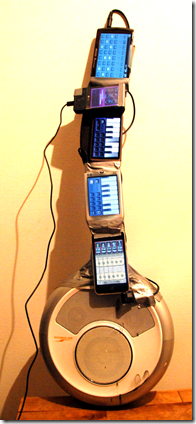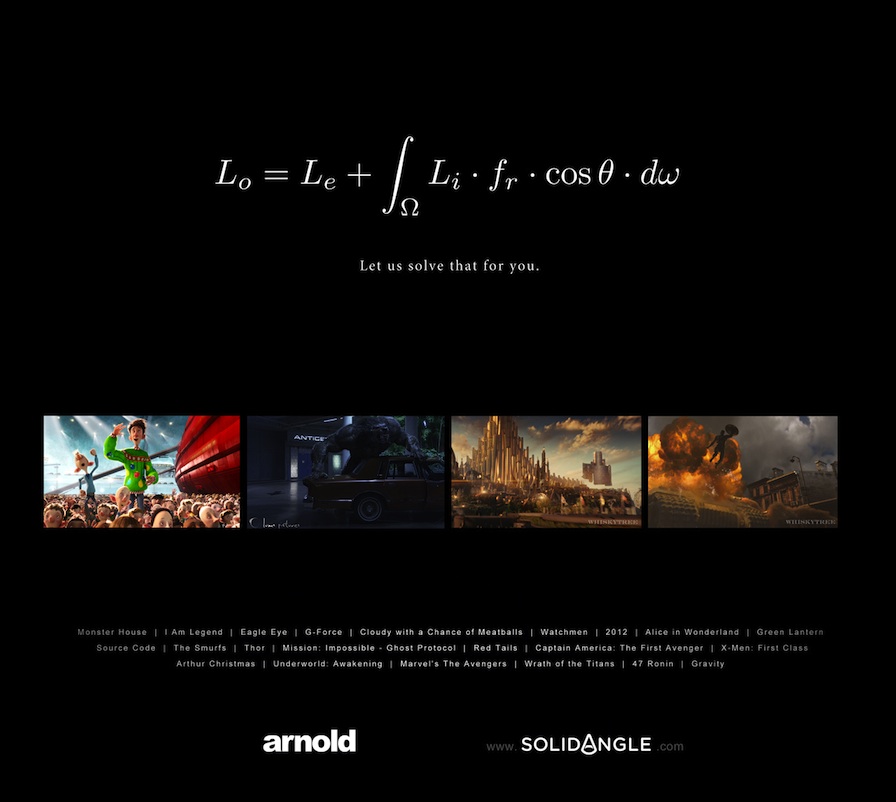UPDATE: The Dailies deadline has been pushed back to May 21st.
The last deadline for submitting SIGGRAPH Talks and Dailies is on May 1st, in just two days (the exact deadline is 22:00 UTC/GMT on May 1st – you can use this website to find out what time that is where you are).
That doesn’t leave much time at all. However a submission to either program can be done quickly, and I’m going to detail the exact steps needed. I’ll list Talks and Dailies separately, since each of these programs not only has a different submission procedure but is relevant to a different audience (Talks are typically presented by graphics programmers and tech artists; Dailies by production artists). This post in general is geared towards game developers rather than researchers, so I’m talking about Word rather than LaTeX, etc.
Last-Minute Talks Submission Process:
- Decide what you are going to talk about. Note that SIGGRAPH Talks are only 20 minutes long, and can cover a variety of topics. Some example Talk abstracts are linked at the end of a previous post; the guidelines under “Production Talks” in the Talks page “Evaluation” tab can also be useful. In general if you recently did anything technically cool related to graphics (rendering feature, art tool, asset creation workflow, etc.), it might be a good Talk topic.
- Make sure you have any needed permissions from your boss / employer / etc. to submit the Talk.
- Write a one-page abstract using this Word template – the links from the first step can also be useful for seeing how to boil down your presentation into a one-page description that will resonate with the jury. Make sure the abstract is only one page long, has at least one image, and clearly describes the specific innovations you will talk about. Save out a PDF file.
- If your Talk topic has a dynamic component to it (e.g. it’s about animation, simulation, or anything else that can’t be judged via still images alone), capture a small amount of video to upload with your submission; a few seconds to a minute are enough in most cases. The video must be in QuickTime MPEG-4 or DivX Version 6 formats, and the file size should not exceed 100 MB (smaller is better for ease of uploading – try to keep the file small by reducing resolution and increasing compression – not too much or it will be hard to see the visual quality of your results).
- Create an account in the SIGGRAPH Information System (just log in if you already have an SIS account). Click on this link, fill in the items marked in bold red, and click the “Create My Account” button at the bottom. An email will be sent to the address you provided – make sure it wasn’t caught in a SPAM filter (it will arrive from sis_support@siggraph.org) and use the provided temporary password to log in. Check the “Change Password” checkbox, type in your temporary and new passwords and click the “Save” button and subsequent “OK” button.
- Click on “Begin a New Submission”. You may be asked to verify your account details – if this happens look them over, make any needed changes, click the “Save These Changes” button at the bottom, and click “Begin a New Submission” again.
- Look for the “Late Breaking” submission type, and click the “Create” button on that row.
- Copy-paste some appropriate text from the one-page abstract you previously wrote to fill in the “Title”, “Summary Statement” and “Short overview” sections. Select a few appropriate keywords and a primary jury category (most likely “Behind the Scenes”, “Best Practices”, or “Methods and Systems”) from the drop-down lists provided. If you’ve previously presented the work elsewhere (e.g. GDC), check the appropriate checkbox and provide details. If the material you are uploading now differs in some significant way from the final presentation (e.g. you are using test assets now and will show final game assets at SIGGRAPH), check the appropriate checkbox and provide details. Ignore the “English Review Service” checkbox – there won’t be time to make use of that service; if you’re not fluent in English, ask a friend or colleague who is to help look over your submission. Don’t worry about the two Education Resources checkboxes either. Click the “Next>>>” button at the bottom of the page.
- Select “Yes” for “I have the necessary rights, permissions, and/or licenses…” (make sure you are indeed not uploading anything you don’t have the rights for – as long as its all from your work and your employer is OK with it you should be fine). In most cases you will select “No” for “My material contains audio” unless you are planning to upload video with an audio track (which you typically won’t need to do). If there is audio make sure it isn’t something like a song you don’t have permissions for (if this is in-game audio and your employer approves, you are likely OK here).
- You won’t have time now to ensure your employer is OK with all the various permissions, so just click “Deny” on the “To grant or deny all of the following rights to SIGGRAPH 2012…” option. Plan to talk to your employer after the deadline and try to get permission to grant as many of these as possible – if your submission is accepted you will be able to modify the permissions later (make sure you do!), and if it isn’t it won’t matter. Enter your full name in “By entering my full name…” on the bottom of the page and click “Next>>>”.
- On the “Add Presentation Formats” page, click the “Create->” button for the “Talk” format.
- Choose “20 minutes” for the length of your talk – it’s hard to get longer talks accepted and most topics of interest can be squeezed into 20 minutes. Click “Eligible for Studio Talk” if your talk has anything to do with asset or level creation, especially if there is a user-generated content aspect. Click “Next>>>”.
- Use the next page to upload the one-page PDF abstract you previously created. Also upload a “representative image” (typically the same image you used for one of the abstract figures, in JPEG format), and any video you have captured previously. Click “Next>>>”.
- Use the next page to add any co-authors. You can also add them later if the Talk is accepted, so if you don’t have time to do so now it’s OK. Click “Next>>>”.
- You are now done; you can still log in again any time before the deadline to tweak your submission if you want. Good luck!
Last-Minute Dailies Submission Process:
- Decide which of your work you will show. Dailies presentations are extremely short (about 2 minutes); they are intended to showcase a single bit of high-quality production art (animation, model, sequence, rig, effect, shader, etc.). There should also be an interesting backstory of some kind (an impossible deadline, a late-night inspiration, an artistic argument, an unexpected romance, etc). This example Dailies presentation and lists of accepted Dailies from SIGGRAPH 2010 and from SIGGRAPH 2011 might help in picking the right piece.
- Make sure you have any needed permissions from your boss / employer / etc. to submit the artwork.
- Write up the backstory of working on the piece. Did you have to work under a completely unreasonable deadline? Did you end up doing the exact opposite of what the art director said she wanted and she loved the results anyway? Did your life experiences inform the work (e.g. a background in breakdancing influencing a combat animation)? This should be an amount of text you can read onstage in less than two minutes, while video of your artwork plays behind you. Save out a PDF file of your backstory from Word, Google Docs etc.
- Capture a video (no more than 90 seconds long) which shows your work; this would be something like a model turntable, looping animation, progression sequence, etc. The submitted video needs to be QuickTime, H264 encoded, 640 x 360p, up to 90 seconds, no sound. This low-res video is just for reviewing purposes; upon acceptance you will need to submit a 720p video.
- Create an account in the SIGGRAPH Information System (just log in if you already have an SIS account). Click on this link, fill in the items marked in bold red, and click the “Create My Account” button at the bottom. An email will be sent to the address you provided – make sure it wasn’t caught in a SPAM filter (it will arrive from sis_support@siggraph.org) and use the provided temporary password to log in. Check the “Change Password” checkbox, type in your temporary and new passwords and click the “Save” button and subsequent “OK” button.
- Click on “Begin a New Submission”. You may be asked to verify your account details – if this happens look them over, make any needed changes, click the “Save These Changes” button at the bottom, and click “Begin a New Submission” again.
- Look for the “SIGGRAPH Dailies” submission type, and click the “Create” button on that row.
- Enter a title for your submission, as well as a one-sentence summary of the art piece and a slightly longer (2-3 sentences) overview explaining the key points (why it is good/interesting/etc.). Don’t worry about the Education Resources checkboxes at this point. Click the “Next>>>” button at the bottom of the page.
- Select “Yes” for “I have the necessary rights, permissions, and/or licenses…” (make sure you are indeed not uploading anything you don’t have the rights for – as long as its all from your work and your employer is OK with it you should be fine). Select “No” for “My material contains audio” (your captured video should not have an audio track).
- You won’t have time now to ensure your employer is OK with all the various permissions, so just click “Deny” on the “To grant or deny all of the following rights to SIGGRAPH 2012…” option. Plan to talk to your employer after the deadline and try to get permission to grant as many of these as possible – if your submission is accepted you will be able to modify the permissions later (make sure you do!), and if it isn’t it won’t matter. Enter your full name in “By entering my full name…” on the bottom of the page and click “Next>>>”.
- Use the next page to upload the PDF backstory you previously created. Also upload a “representative image” (just a frame from your captured video, in JPEG format), and the video itself. Click “Next>>>”.
- If your piece has any co-authors (most Dailies just have one author, but there might be someone else you want to also credit on the piece) use the next page to add them. You can also add them after acceptance, so if you don’t have time to do so now it’s OK. Click “Next>>>”.
- You are now done; you can still log in again any time before the deadline to tweak your submission if you want. Good luck!




